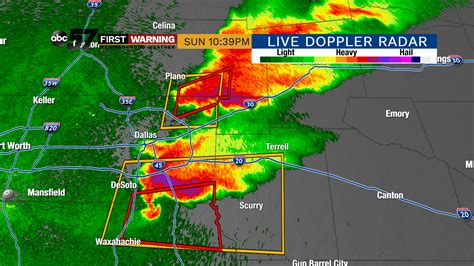Discover the history, advancements, and future of radar technology in Dallas. Explore the role of radar in weather forecasting and its impact on the community.Are you curious about the role of radar technology in Dallas? Whether you’re a weather enthusiast or simply interested in the advancements of technology, radar plays a crucial role in various aspects of life in Dallas. In this blog post, we will explore the history of radar technology, its significance in the Dallas community, the different types of radar systems, advancements in radar technology, and its applications in weather forecasting. We will also delve into the challenges of interpreting radar data and the future of radar technology in Dallas, as well as its impact on the local community. Join us as we uncover the importance of radar technology and its influence on the city of Dallas.
Introduction to Dallas Radar
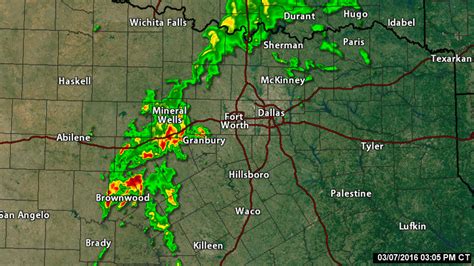
Dallas radar refers to the use of radar technology in the city of Dallas, Texas. Radar, which stands for Radio Detection and Ranging, is a system that uses radio waves to determine the range, angle, or velocity of objects. In the context of Dallas, radar technology is crucial for various applications including weather forecasting, air traffic control, and military defense.
One of the primary uses of radar in Dallas is for weather monitoring and prediction. By using radar systems, meteorologists are able to track and analyze weather patterns in the region, which is essential for issuing timely warnings and ensuring public safety during severe weather events such as thunderstorms, tornadoes, and hurricanes.
In addition to weather monitoring, radar technology plays a significant role in air traffic control at Dallas/Fort Worth International Airport, one of the busiest airports in the world. Radar systems are used to track the movement of aircraft, ensuring safe and efficient air travel in and out of the region. Furthermore, radar is also employed for defense and surveillance purposes, aiding in the detection of potential threats and ensuring the security of Dallas and its surrounding areas.
As technology continues to advance, the future of radar technology in Dallas holds great promise. With ongoing developments in radar systems and data interpretation, the capabilities of radar technology are expected to further improve, offering enhanced precision and accuracy in various applications. The potential impacts of these advancements on the Dallas community are significant, ushering in new opportunities for safety, security, and overall well-being.
History of Radar Technology
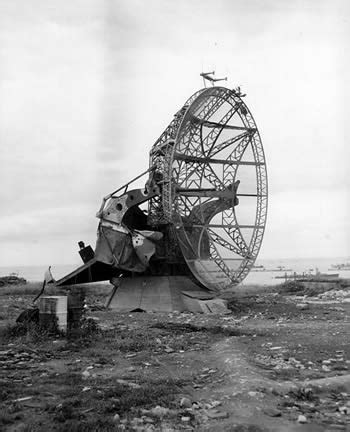
Radar technology has a long and fascinating history, dating back to the early 20th century. It all started with the development of radio waves and the discovery of their ability to bounce off objects and return to their source. The first practical demonstration of this principle came in the 1930s, when scientists successfully used radio waves to detect the presence of an approaching aircraft. This groundbreaking discovery laid the foundation for the development of modern radar systems and revolutionized the way we perceive and interact with the world around us.
The history of radar technology is a story of innovation and ingenuity. Over the years, radar systems have evolved from simple, primitive devices to sophisticated, high-tech instruments that are capable of detecting and tracking objects with incredible precision. The invention of the magnetron, a high-powered vacuum tube that generates microwave frequencies, was a significant milestone in the history of radar technology. This breakthrough allowed for the development of more powerful and efficient radar systems, paving the way for the modern era of radar technology.
Radar technology has played a crucial role in shaping the course of human history. During World War II, radar systems were used to detect and track enemy aircraft and ships, giving military forces a critical strategic advantage. In the decades that followed, radar technology continued to advance and expand its applications, from air traffic control and weather forecasting to ground surveillance and space exploration. Today, radar technology has become an indispensable tool in a wide range of industries and has transformed the way we navigate and understand our environment.
The history of radar technology is a testament to the power of human innovation and the endless possibilities of scientific discovery. As we continue to push the boundaries of technological advancement, it is important to look back on the achievements and milestones that have brought us to where we are today. From its humble beginnings as a primitive detection system to its current status as a cutting-edge instrument of exploration and discovery, radar technology has come a long way, and its journey is far from over.
The Role of Radar in Dallas
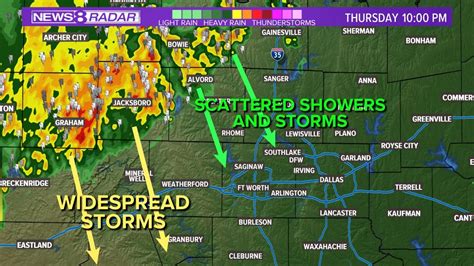
Radar technology plays a crucial role in various aspects of Dallas, including aviation, weather forecasting, and defense. The radar systems in Dallas are essential for monitoring and tracking aircraft movements, ensuring air traffic safety, and preventing collisions. Additionally, radar technology is instrumental in weather forecasting, allowing meteorologists to detect storms, monitor precipitation patterns, and issue timely warnings to the public. The radar systems in Dallas also play a significant role in national security and defense, providing surveillance and tracking capabilities to safeguard the region.
Moreover, the radar technology utilized in Dallas contributes to the efficient functioning of various industries, such as transportation, agriculture, and telecommunications. It enables accurate navigation for ships and facilitates the efficient operation of agricultural machinery. Additionally, radar systems are used in telecommunications for wireless communication and satellite signal transmission, supporting the connectivity and communications infrastructure of Dallas.
The advancements in radar technology have led to enhanced capabilities and improved performance of radar systems in Dallas. Modern radar systems are equipped with advanced features, such as high-resolution imaging, multi-target tracking, and adaptive signal processing, which further enhance their effectiveness and versatility. These advancements have expanded the applications of radar technology in Dallas, making it an indispensable tool for numerous purposes.
In conclusion, the role of radar in Dallas is multifaceted and far-reaching, encompassing critical functions in aviation, weather forecasting, defense, and various industries. The continual advancements in radar technology are poised to further enhance its capabilities and expand its applications, reinforcing its significance in the context of Dallas and beyond.
Types of Radar Systems
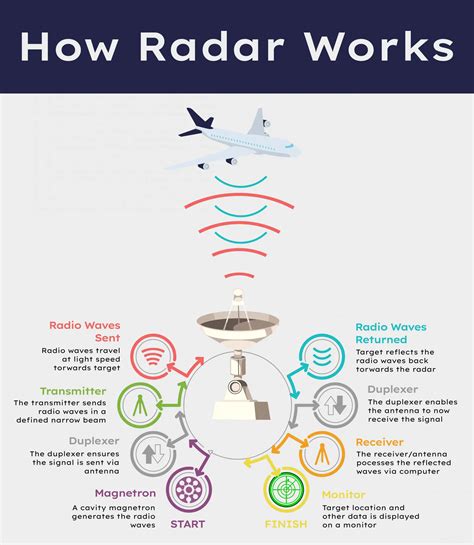
Radar systems are used for various purposes, and there are different types of radar systems designed to meet specific needs. Some of the key types of radar systems include:
1. Ground-Based Radar: Ground-based radar systems are used for air traffic control, weather monitoring, and defense purposes. These radars are usually stationary and are installed at strategic locations to provide continuous surveillance of the surrounding airspace.
2. Airborne Radar: Airborne radar systems are mounted on aircraft and are used for navigation, terrain mapping, weather detection, and target tracking. These radars are designed to operate at high altitudes and provide real-time data to the aircraft’s pilot and crew.
3. Naval Radar: Naval radar systems are used on ships and submarines for navigation, surface surveillance, and missile guidance. These radars are designed to withstand harsh maritime environments and are essential for ensuring the safety and security of naval vessels.
4. Weather Radar: Weather radar systems are used to monitor precipitation, cloud formations, and severe weather events. These radars play a crucial role in predicting and monitoring weather patterns, which is essential for issuing accurate weather forecasts and warnings to the public.
Advancements in Radar Technology
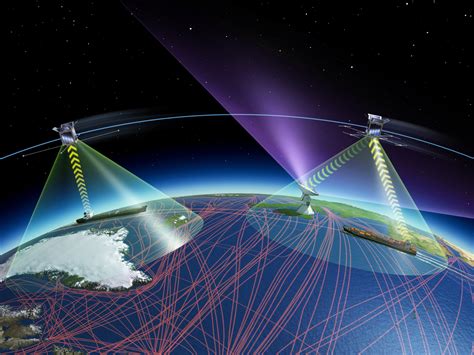
Radar technology has undergone significant advancements over the years, leading to improved performance and capabilities in various applications. One of the most notable advancements is the development of phased array radar systems, which allow for electronic beam steering and faster scanning of the surrounding environment. This technology has revolutionized radar systems by enhancing their flexibility and agility in tracking targets and monitoring the weather.
Another major advancement in radar technology is the integration of digital signal processing algorithms, which enable more accurate and precise target detection and tracking. This has greatly improved radar performance in challenging environments and has expanded the range of applications for radar systems, including air traffic control, military surveillance, and weather forecasting.
In addition to hardware and software advancements, there have been significant improvements in radar data processing and visualization techniques. Modern radar systems are equipped with advanced data analysis tools and graphical user interfaces that provide operators with comprehensive situational awareness and decision support. This has enhanced the effectiveness and efficiency of radar operations in various fields, including defense, aviation, and meteorology.
- These advancements in radar technology have also paved the way for the emergence of innovative radar-based applications, such as autonomous vehicles and remote sensing systems. The integration of radar sensors in autonomous vehicles enables them to navigate and detect obstacles with high precision and reliability, contributing to the development of safe and efficient transportation systems. Similarly, radar-based remote sensing platforms have revolutionized environmental monitoring and resource management by providing valuable data for agricultural, geological, and ecological studies.
| Advancements in Radar Technology | Impact |
|---|---|
| Phased array radar systems | Enhanced flexibility and faster scanning |
| Digital signal processing | Improved target detection and tracking |
| Radar data processing and visualization | Comprehensive situational awareness and decision support |
| Radar-based applications | Autonomous vehicles and remote sensing |
Overall, the advancements in radar technology have significantly elevated the capabilities and potential of radar systems in various domains, making them indispensable tools for modern society. As technology continues to evolve, we can expect further innovations and breakthroughs that will continue to shape the future of radar technology and its applications.
Applications of Radar in Dallas
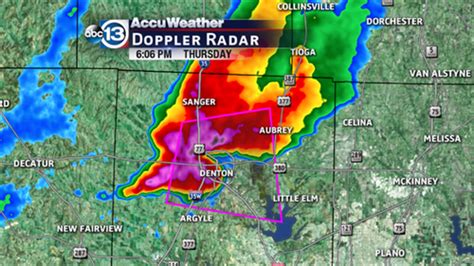
Radar technology has a wide range of applications in the city of Dallas, Texas. From military defense to weather monitoring, radar plays a crucial role in various aspects of daily life in the city.
One of the primary applications of radar in Dallas is in aviation. The Dallas/Fort Worth International Airport, one of the busiest airports in the world, relies heavily on radar systems for air traffic control and safety. Radar helps to track the movement of aircraft, monitor weather conditions, and ensure the efficient and safe operation of flights in and out of the airport.
Another important use of radar in Dallas is for weather forecasting. The city is prone to severe weather events, including thunderstorms, tornadoes, and hailstorms. Radar technology, such as Doppler radar, is instrumental in monitoring and tracking these weather phenomena, providing valuable data for meteorologists to issue timely warnings and advisories to the residents of Dallas.
In addition to aviation and weather monitoring, radar is also utilized in marine operations in Dallas. The Port of Dallas, situated along the Trinity River, relies on radar systems for navigation and ensuring the safe passage of vessels transporting goods and commodities in and out of the city.
Furthermore, radar technology is integral to the security infrastructure of Dallas. From border surveillance to law enforcement activities, radar systems are used to monitor and track potential threats, ensuring the safety and security of the residents of Dallas.
Importance of Radar for Weather Forecasting
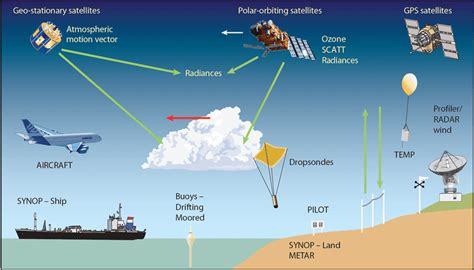
Weather forecasting plays a crucial role in our daily lives, from planning our daily activities to preparing for extreme weather events. Radar technology has significantly improved the accuracy of weather forecasting by providing real-time data on precipitation, storm movement, and severe weather patterns. This advanced technology enables meteorologists to track and predict the path of storms, hurricanes, and tornadoes, allowing for timely warnings and evacuations, ultimately saving lives.
Moreover, radar data is essential for monitoring other weather phenomena such as snowfall, hail, and fog, which can impact transportation and infrastructure. With the help of radar, forecasters can analyze the intensity and duration of precipitation, leading to more precise predictions of flooding, landslides, and other weather-related hazards.
Additionally, radar plays a crucial role in aviation and air traffic management, providing pilots and air traffic controllers with vital information on weather conditions, such as thunderstorms, turbulence, and wind shear. This ensures the safety and efficiency of air travel, reducing the risk of accidents and delays.
Furthermore, radar technology is essential for agricultural planning, as it helps farmers and growers anticipate weather patterns affecting crop yield and quality. By utilizing radar data, farmers can make informed decisions regarding irrigation, fertilization, and pest control, leading to improved agricultural productivity and sustainability.
| Benefits of Radar for Weather Forecasting |
|---|
| Enhanced accuracy in predicting severe weather events |
| Early warnings for storms, hurricanes, and tornadoes |
| Improved safety for aviation and air travel |
| Optimized agricultural planning and productivity |
Challenges in Radar Data Interpretation
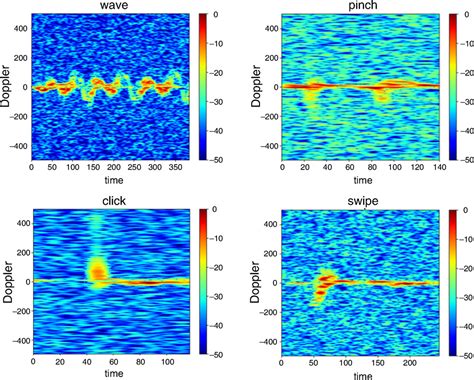
The interpretation of data provided by radar systems can present a number of challenges for meteorologists and researchers. One of the main difficulties is the need to differentiate between actual weather phenomena and noise or interference in the radar signal. This can be particularly problematic in areas with complex terrain or urban environments, where the radar beam may be scattered or reflected in unpredictable ways.
Furthermore, radar data interpretation requires a deep understanding of atmospheric physics and meteorology, as well as the ability to visualize and analyze large datasets in real time. Meteorologists must be able to discern the signature of severe weather events such as thunderstorms, tornadoes, and hurricanes from the myriad of echoes and returns that appear on the radar screen.
In addition, the integration of radar data with other observational tools such as satellite imagery, weather balloons, and ground-based instruments can pose its own set of challenges. The combination of different data streams requires sophisticated algorithms and analysis techniques to ensure accurate and reliable forecasting and modeling.
Finally, the rapid evolution of radar technology itself presents a challenge, as meteorologists must continually adapt and learn how to interpret data from new generations of radar systems with enhanced capabilities. This requires ongoing training and education to stay current with the latest advancements in the field.
| Challenges in Radar Data Interpretation |
|---|
| Differentiating between weather phenomena and noise |
| Understanding of atmospheric physics and meteorology |
| Integration of radar data with other observational tools |
| Adapting to new generations of radar technology |
Future of Radar Technology in Dallas
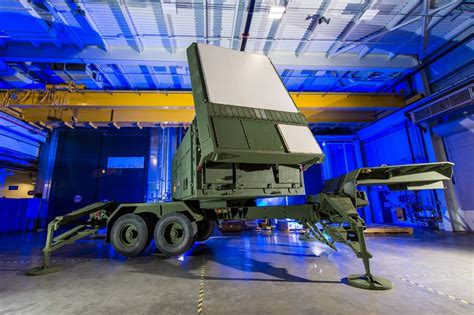
The future of radar technology in Dallas looks promising, with continual advancements and innovations in the field. As technology continues to evolve, so does radar technology. With the rapid growth in the tech industry, radar is expected to become more sophisticated and efficient in the years to come.
The integration of artificial intelligence and machine learning into radar systems is set to revolutionize the way radar technology is used in various applications. This will lead to improved accuracy, faster data processing, and enhanced capabilities in tracking and identifying targets. These developments will greatly benefit industries such as aviation, defense, meteorology, and autonomous vehicles.
In addition, the miniaturization of radar systems will allow for their deployment in smaller devices and wearable technology. This could have profound implications for surveillance, navigation, and communication in everyday life, as well as in specialized fields like healthcare and emergency response.
Furthermore, advancements in radar technology will also contribute to the ongoing efforts to improve weather forecasting and disaster preparedness in the region. With more accurate and timely data provided by advanced radar systems, communities in Dallas will be better equipped to anticipate and respond to inclement weather conditions and natural disasters.
In conclusion, the future of radar technology in Dallas holds great promise, with the potential for enhanced capabilities, increased integration with other technologies, and widespread applications across various industries and sectors of society.
Impacts of Radar on Dallas Community
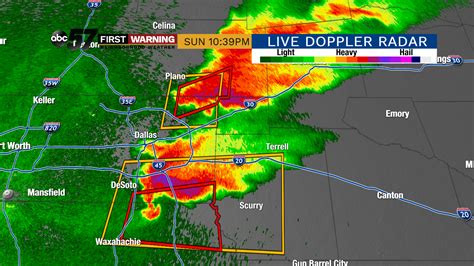
Radar technology has had a significant impact on the Dallas community, with its wide range of applications and benefits. One of the major impacts of radar on the Dallas community is in the field of weather forecasting. The accuracy and precision of radar systems have helped in predicting severe weather events such as tornadoes, thunderstorms, and hurricanes, thereby enabling the community to take necessary precautions and minimize damage.
Additionally, radar technology has played a crucial role in enhancing the safety and security of the Dallas community. The use of radar in air traffic control systems has ensured safe and efficient air travel, reducing the risk of accidents and improving overall transportation infrastructure. Furthermore, radar-based surveillance systems have been instrumental in enhancing border security and monitoring unauthorized activities, thereby contributing to the safety and well-being of the community.
Moreover, the impact of radar technology extends to the economic development of the Dallas community. The use of radar in agricultural and environmental monitoring has enabled farmers to improve crop yield, optimize irrigation, and mitigate the impact of natural disasters, thereby contributing to the overall prosperity and sustainability of the agricultural sector. Additionally, radar systems have been used in resource exploration and management, leading to the discovery of valuable natural resources and contributing to the economic growth of the community.
Furthermore, radar technology has had a significant impact on the healthcare sector in Dallas. The use of radar-based medical imaging systems has revolutionized the diagnosis and treatment of various medical conditions, leading to improved patient outcomes and advancing the overall healthcare infrastructure in the community. Additionally, radar-based research and development have led to the discovery of new medical technologies and treatments, further enhancing the quality of healthcare services in Dallas.
In conclusion, radar technology has had a profound impact on the Dallas community, ranging from improving weather forecasting and enhancing safety and security to driving economic development and revolutionizing healthcare services. The continued advancements in radar technology are expected to further amplify its positive impacts on the community, making it an essential and indispensable technology for the overall well-being and progress of Dallas.
Frequently Asked Questions

What is the purpose of a radar in Dallas?
The radar in Dallas is used for weather surveillance, including tracking storms, precipitation, and other atmospheric conditions.
How does the radar in Dallas help in predicting weather?
The radar provides real-time data on the movement and intensity of weather systems, which helps meteorologists make more accurate forecasts and issue timely warnings for severe weather events.
Where is the radar located in Dallas?
The radar is located at the National Weather Service Forecast Office in the Dallas/Fort Worth area.
Is the radar in Dallas used for monitoring air traffic?
No, the radar in Dallas is specifically used for weather surveillance and is not utilized for monitoring air traffic.
Can the radar in Dallas detect tornadoes?
Yes, the radar is capable of detecting tornadoes by observing the rotation and structure of storm cells, which helps in issuing tornado warnings.
What technology is used in the radar in Dallas?
The radar in Dallas uses Doppler radar technology, which allows for the measurement of the speed and direction of moving objects, such as raindrops, within the atmosphere.
How far can the radar in Dallas detect weather conditions?
The radar in Dallas has a range of several hundred miles, allowing it to detect and track weather conditions across a wide area of Texas and surrounding regions.

